#corrupt Steven theory
Text

Falsification AU || Pages 103
REBLOG ONLY
Steven realizes through his sleep, he had a traumatic event happen...again...he's becoming more aware he keeps having body failures and the corruption.
Previous >> Next
#steven universe#falsification au#steven universe future#corrupted steven#steven universe au#steven universe fanart#corrupt steven theory#steven universe comic
163 notes
·
View notes
Text
Hello everyone! I've finally managed to get everything sorted out over here SO!
I am VERY HAPPY to announce that general sales will finally open THIS COMING MONDAY on 10/31
Payments will be done through PAYPAL and VENMO and submitted order forms will be checked at the END OF NOVEMBER and mailed out as payments come in!
#steven universe#update#tiggs#steven universe future#steven universe zine#corrupt steven theory#ill be finishing up sending out the remaining preorders tomorrow!
15 notes
·
View notes
Text
Most Specialest Boy Ever Has Arrived! !!!
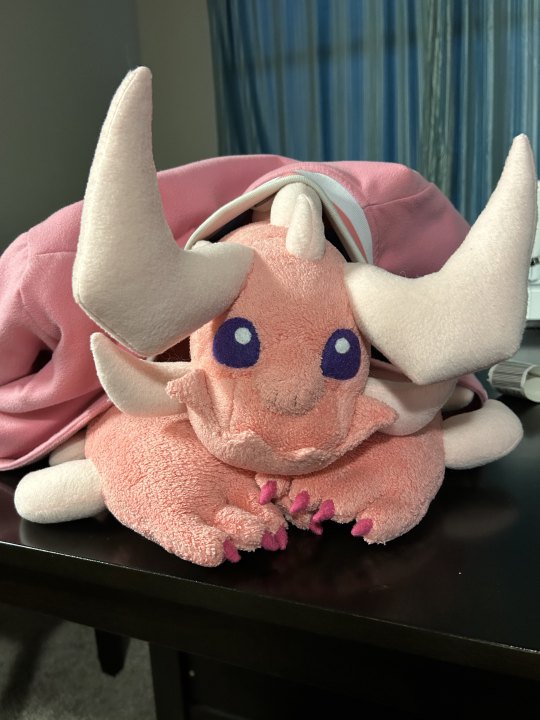
After years and years of Craving a Lorge Plush Lad, my dreams have come true and he is now home! ;www;;;;;
This truly just felt like the natural conclusion of my life after kickstarting Worm Theory™ on this webbed site back in the day.
He is very large and Distinguished- here is my Rose Quartz sword WIP as a size comparison, the guy's shockingly long! Perfect for lounging across a bed or a couch as my cartoon watching buddy.


This plush is a lovingly made one-of-a-kind from Elkkuvelkku (link leads to their Insta post about this boyo) on Instagram/Etsy- this seller doesn't currently have any other handmade plushies on their storefront, but they have a ton of cute Pokémon patterns if you're into that.
#corrupted steven theory challenge round: completed#listen i am nothing if not Dedicated to the cause#su#su future#steven universe#jen rambles#i am an Adult and this is what i spend my Adult money on yes iufkjhsniuefjkdbnghj
162 notes
·
View notes
Text


3 year apart redraw!!! woot woot!
475 notes
·
View notes
Text
peek this image from the Steven universe art book
I thought it was interesting
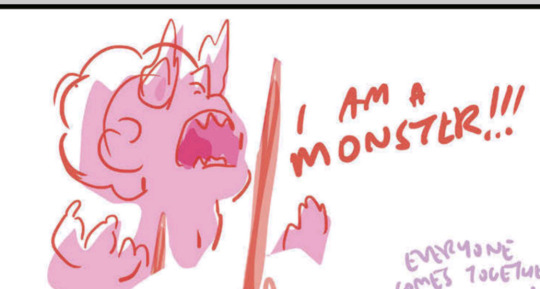
#steven universe future#corrupted steven#pink steven#steven universe#steven universe end of an era#corrupted steven theory#monster steven
86 notes
·
View notes
Photo
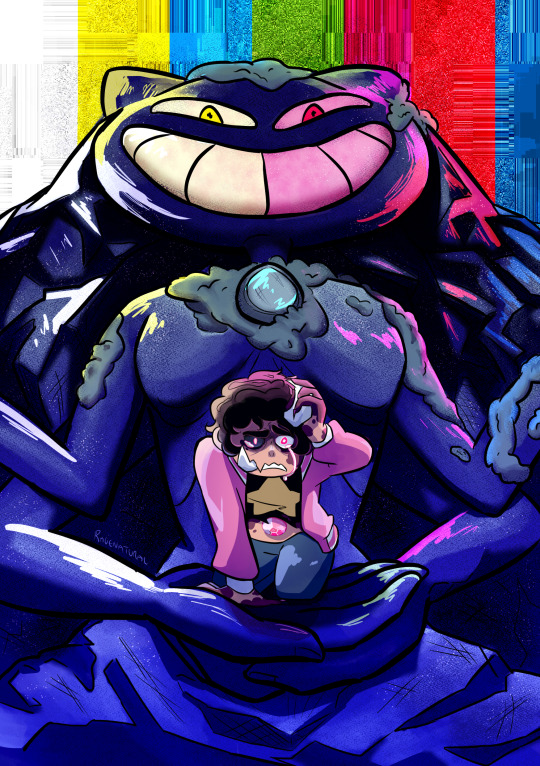
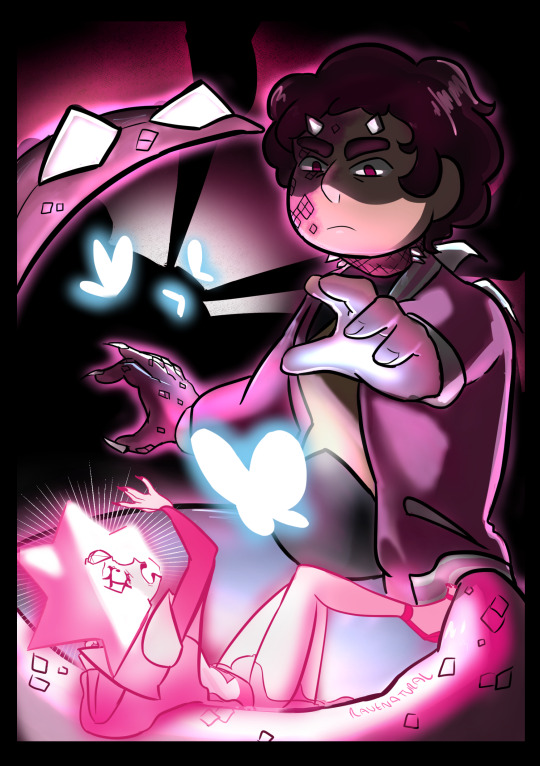
oh? what’s this?? it’s the pieces I did for the @falling-apart-zine !!!!!
now that leftover sales are open we’ve been given the ok to start posting our full pieces, so please keep an eye out for all the wonderful works featured!
I’m so grateful to have been part of this zine, and it would not have been possible without all of you ( fellow contributors, mods, supporters—everyone involved! ) so thank you to all who gave me this opportunity!!
I hope you all enjoy this amalgam of love for our favorite wormy boy uvu <3
#Corrupted Steven Theory#steven universe#steven universe future#fanart#su fanart#white diamond#falling apart zine#ravens creations
110 notes
·
View notes
Text

this fucking thing: *is the embodiment of steven's complete mental collapse*
my dumb ass: large friend :) cuddly guy :) absolute goober :)
#listen. it's not my fault they made him look like a big plushie#steven universe#steven universe future#kaiju steven#monster steven#corrupted steven theory#wormy boi#i have no idea what we decided to call this thing. I'm trying my best#stenie eve#enedraws#bullshit board
4 notes
·
View notes
Link
By: Steven Pinker
Published: Jan 10, 2023
When I tell people that I teach and write about human rationality, they aren’t curious about the canons of reason like logic and probability, nor the classic findings from the psychology lab on how people flout them. They want to know why humanity appears to be losing its mind.
Why do people believe in outlandish conspiracy theories, such as that Covid-19 was a plot by Bill Gates to implant trackable microchips in our bodies? Or in blatant fake news, such as that Joe Biden called Trump supporters “dregs of society”? Or in paranormal woo-woo, like astrology, extra-sensory perception (ESP), and spiritual energy in pyramids and crystals?
It won’t do to give the Spockian answer that humans are simply irrational. Our hunter-gatherer ancestors lived by their wits, outsmarting animals with traps, poisons, and ambushes, while protecting themselves from the elements with fire, clothing, and shelter. It was this ingenuity that allowed mankind, according to the definition by Ambrose Bierce, to “infest the whole habitable earth and Canada.” Since then our species has plumbed the nature of matter, life, and mind, has slipped the surly bonds of Earth to explore other planets, and has blunted the scourges of war, pestilence and famine, doubling our life expectancy. Even the everyday feats of holding a job, keeping food in the fridge, and getting the kids clothed, fed, and off to school on time require feats of reasoning that are beyond the ken of our best AI.
How, then, can we explain the pandemic of poppycock? My best answer comes in four parts.
The first is rooted in the very nature of rationality. Reason, almost by definition, is inference deployed in service of a goal; no one gets rationality credit merely for enumerating true but useless propositions. But that goal need not be an objective understanding of the world. It can also be to win an argument in which the stakes matter to you. As Upton Sinclair pointed out, “It is difficult to get a man to understand something when his salary depends upon his not understanding it.”
Or reason can be used to show how wise and moral your group is—your religion, tribe, your political sect—and how stupid and evil a rival one is. This “myside bias,” explained in Keith Stanovich’s The Bias That Divides Us, appears to be the most pervasive bias among the hundreds documented by cognitive science and social psychology. And there’s a perverse rationality behind it. It’s far from irrational for an individual to endorse a belief that gains them status as a hero for their side while avoiding ostracism as a traitor. The problem is that it’s irrational for a society as a whole to lurch between one faction’s dogmas and another’s rather than collectively arrive at the most accurate understanding of reality. These conflicting incentives place us in a tragedy of the rationality commons.
-
A second contributor to irrationality is that human reasoning is guided by deeply rooted folk intuitions, the evolutionary legacy of having to figure out the hidden laws of reality before the scientific revolution gave us a sound method for doing so. Those intuitions, while indispensable for navigating everyday human life, are incommensurate with our best modern understanding of the world. The mismatch makes us vulnerable to superstition and pseudoscience.
For example, we are intuitive dualists: we feel that people are composed of two things, a body and a mind. We don’t treat others as robots or meat puppets, but assume they have beliefs and desires and sentience like our own, which we ascribe to an intangible mind or soul, a ghost in the machine. (This contrasts with the dominant scientific understanding that mental life arises from neurons firing in patterns.) From there it’s a short step to believing that minds can part company with bodies, and so to believe in spirits, souls, ghosts, an afterlife, reincarnation, and ESP.
We are also intuitive essentialists, sensing that living things contain an invisible essence or lifeblood that gives them their form and powers. This instinct allowed our ancestors to discern the continuity beneath the differing appearances of a single species (such as its eggs, seeds, flowers, or larvae) and to extract foods, medicines, and poisons from their tissues. But from essentialist inklings it’s a short step to intuit that disease must be caused by an adulteration of one’s essence by a foreign contaminant. That in turn makes it natural to recoil from vaccines, which, after all, introduce a bit of an infectious agent deep into the tissues of a healthy body. It invites homeopathy and herbal remedies, which infuse us with tinctures that seem to carry the essence of a healthful living thing. And it inspires the many forms of quackery in which people are subjected to purging, bloodletting, fasting, sweating, cupping, and other means of “getting rid of toxins.”
Finally, we are intuitive teleologists, aware that our own plans, tools, and artifacts are designed with a purpose. As the 19th-century theologian William Paley pointed out, when you find a watch lying on the ground, you correctly infer that it was designed by a watchmaker. But from there it’s a short step to inferring that the universe has a purpose, and so to believe in astrology, creationism, synchronicity, and the philosophy that “everything happens for a reason.” That mentality can also lead to conspiracy theorizing, abetted by the truth that our enemies really may plot out ways to harm us, and that in being vigilant against them, false positives may be less costly than false negatives.
-
The third key to public irrationality is to consider how we unlearn these folk intuitions and acquire a more sophisticated understanding. It’s certainly not by each of us exercising our inner genius. It’s by trusting legitimate expertise: scientists, journalists, historians, government record-keepers, and responsible, fact-checked authors. After all, few of us can really justify our beliefs by ourselves, including the true ones. Surveys have shown that creationists and climate change deniers are, on average, no less scientifically literate than believers (many of whom attribute warming to the ozone hole, toxic waste dumps, or plastic straws in the ocean). The difference is political tribalism: the farther to the right, the more denial.
For my part, I’ve been vaccinated against Covid five times, but my understanding of how the vaccines work extends little deeper than “Something something mRNA antibodies immune system.” I basically trust the people in the white coats who say they work. Flaky beliefs, in contrast, persist in people who don’t trust the public health establishment—who see it as just another faction, one that competes against their trusted preachers, politicians, and celebrities. In other words, we all have to trust authorities; the difference between believers who are probably right and those who are almost certainly wrong is that the authorities the first group listens to engage in practices and belong to institutions that are explicitly designed to sift truths from falsehoods.
-
The last piece of the puzzle of why people believe outlandish things is: It depends on what you mean by “believe.” George Carlin observed, “Tell people there’s an invisible man in the sky who created the universe, and the vast majority will believe you. Tell them the paint is wet, and they have to touch it to be sure.” The distinction was drawn more formally by the social psychologist Robert Abelson in his classic article “Beliefs Are Like Possessions,” which distinguished between “distal” and “testable” beliefs.
Touching the paint and other empirical probing is how we navigate the zone of reality in which we live our lives: the physical objects around us, the people we deal with face to face, the memory of our interactions. Beliefs in this zone are testable, and the compos mentis among us hold them only if they are likely to be true. They have no choice: reality, which doesn’t go away when you stop believing in it, punishes people for delusions.
But people also hold beliefs in spheres of existence that are far from their everyday experience: the distant past, the unknowable future, faraway peoples and places, remote corridors of power, the microscopic, the cosmic, the counterfactual, the metaphysical. Our lived experience gives us no grounds for beliefs about how the universe began, or when humans first appeared, or what makes it rain, or why bad things happen to good people, or what really goes on in the Oval Office or Microsoft headquarters or the dining rooms of Davos. Nor, except for a few movers and shakers and deciders, do our beliefs on these matters make any difference.
But that doesn’t mean that people abstain from believing things about these imponderables at all. They can adopt beliefs about them that are entertaining, or uplifting, or empowering, or morally edifying. Whether beliefs in this mythology zone are objectively “true” or “false” is, to them, unknowable and hence irrelevant.
Here again there’s a kind of historical rationality to this insouciance. Until modern times—the scientific revolution, the Enlightenment, systematic historiography and journalism, public records and datasets—the truth about these remote realms really was unknowable, and mythology was as good a kind of belief as any. This, I suggest, is the default human intuition when it comes to beliefs about these recondite matters. To appreciate the naturalness of this mythological mindset, you don’t have to invoke hunter-gatherers on the Pleistocene savannah. You just have to think about humanity during the vast majority of its existence, and about the vast majority of people today who have not signed on to the Enlightenment conviction that all of reality is in principle knowable by the scientific-analytical mindset.
-
The result is that there are as many kinds of mythological belief as there are questions about the world beyond our senses. The most obvious is religion, which most of its adherents cheerfully concede is a matter of faith, rather than of reason or evidence.
Another consists of national myths about the glorious martyrs and heroes who founded our great nations. The real historians who expose their feet of clay are as popular as a skunk at a garden party.
Many conspiracy theories, too, are entertained as engrossing myths rather than credible hypotheses. Believers in vast nefarious conspiracies, such as 9/11 “truthers,” hold their meetings and publish their exposés openly, apparently unconcerned that the omnipotent regime will crack down on brave truth-tellers like them.
QAnon might be likened to a live action role-playing game, with fans avidly trading clues and following leads. Its progenitor, Pizzagate (according to which Hillary Clinton ran a child sex ring out of the basement of a DC pizzeria), also had a make-believe quality. As the cognitive scientist Hugo Mercier has pointed out, virtually none of the adherents took steps commensurate with such an atrocity, like calling the police. (One of them did leave a one-star review on Google.) With the exception of the fanatic who burst into the restaurant with his guns blazing to rescue the children, among Pizzagate believers the proposition “I believe that Hillary Clinton ran a child sex ring” can really be translated as “I believe that Hillary Clinton is so depraved that she is capable of running a child sex ring”—or, perhaps even more accurately, “Hillary…Boo!” Beliefs outside our immediate experience, then, can be expressions of moral and political commitments rather than assertions of factual states of affairs.
Many of us are nonplussed by this way of thinking. It’s one thing to believe that Hillary Clinton is a morally compromised person—everyone is entitled to an opinion—but it’s quite another thing, and completely unacceptable, to express that opinion as a fabricated factual assertion.
But it’s our mindset that is exotic and unnatural. For many of us, it’s the dividend of a higher education which has imparted the sense that there is a fact of the matter about states of the world; that even if we don’t know it, there are ways of finding out; and that, as Bertrand Russell put it, “It is undesirable to believe a proposition when there is no ground whatsoever for supposing it is true.” Indeed, one could argue that this mindset is the most important dividend of higher education.
-
Or at least, it used to be. Here's another candidate for a mythology zone: the sacred creeds of academic and intellectual elites. These include the belief that we are born blank slates, that sex is a social construction, that every difference in the social statistics of ethnic groups is caused by racism, that the source of all problems in the developing world is European and American imperialism, and that repressed abuse and trauma are ubiquitous.
Many observers have been taken aback by the repression of dissent from these beliefs in contemporary universities—the deplatformings, the cancelings, the heckler’s vetoes, the defenestrations, the multi-signatory denunciations, the memory-holing of journal articles. Universities, after all, are supposed to be the place in which propositions are interrogated and challenged and complexified and deconstructed, not criminalized. Yet these beliefs are treated not as empirical hypotheses but as axioms that decent members of the community may not challenge.
Academic cancel culture may be a regression to the default human intuition that distal beliefs are no more than moral expressions—in this case, opposition to bigotry and oppression. But the default intuition has also been intellectualized and fortified by the doctrines of relativism, postmodernism, critical theory, and social constructionism, according to which claims to objectivity and truth are mere pretexts to power. This marriage of intuition and theory may help us make sense of the mutual unintelligibility between Enlightenment liberal science, according to which beliefs are things about which decent people may be mistaken, and critical postmodern wokeism, according to which certain beliefs are self-incriminating.
-
Can anything be done? Explicit instruction in “critical thinking” is a common suggestion. These curricula try to impart an awareness of fallacies such as arguments from anecdote and authority, and of cognitive biases such as motivated reasoning. They try to inculcate habits of active open-mindedness, namely to seek disconfirmatory as well as confirmatory evidence and to change one’s mind as the evidence changes.
But jaded teachers know that lessons tend to be forgotten as soon as the ink is dry on the exam. It’s hard, but vital, to embed active open-mindedness in our norms of intellectual exchange wherever it takes place. It should be conventional wisdom that humans are fallible and misconceptions ubiquitous in human history, and that the only route to knowledge is to broach and then evaluate hypotheses. Arguing ad hominem or by anecdote should be as mortifying as arguing from horoscopes or animal entrails; repressing honest opinion should be seen as risible as the doctrines of biblical inerrancy or Papal infallibility.
But of course we can no more engineer norms of discourse than we can dictate styles of hairstyling or tattooing. The norms of rationality must be implemented as the ground rules of institutions. It’s such institutions that resolve the paradox of how humanity has mustered feats of great rationality even though every human is vulnerable to fallacies. Though each of us is blind to the flaws in our own thinking, we tend to be better at spotting the flaws in other people’s thinking, and that is a talent that institutions can put to use. An arena in which one person broaches a hypothesis and others can evaluate it makes us more rational collectively than any of us is individually.
Examples of these rationality-promoting institutions include science, with its demands for empirical testing and peer review; democratic governance, with its checks and balances and freedom of speech and the press; journalism, with its demands for editing and fact-checking; and the judiciary, with its adversarial proceedings. Wikipedia, surprisingly reliable despite its decentralization, achieves its accuracy through a community of editors that correct each other's work, all of them committed to principles of objectivity, neutrality, and sourcing. (The same cannot be said for web platforms that are driven by instant sharing and liking.)
If we are to have any hope of advancing rational beliefs against the riptide of myside bias, primitive intuitions, and mythological thinking, we must safeguard the credibility of these institutions. Experts such as public health officials should be prepared to show their work rather than deliver pronouncements ex cathedra. Fallibility should be acknowledged: we all start out ignorant about everything, and whenever changing evidence calls for changing advice, that should be touted as a readiness to learn rather than stifled as a concession of weakness.
Perhaps most important, the gratuitous politicization of our truth-seeking institutions should be halted, since it stokes the cognitively crippling myside bias. Universities, scientific societies, scholarly journals, and public-interest nonprofits have increasingly been branding themselves with woke boilerplate and left-wing shibboleths. The institutions should not be surprised when they are then blown off by the center and right which make up the majority of the population. The results have been disastrous, including resistance to climate action and vaccination.
The defense of freedom of speech and thought must not be allowed to suffer that fate. Its champions should have at their fingertips the historical examples in which free speech has been indispensable to progressive causes such as the abolition of slavery, women’s suffrage, civil rights, opposition to the war in Vietnam, and gay rights. They should go after the censors on the right as vigorously as those on the left, and should not give a pass to conservative intellectuals or firebrands who are no friends to free speech, but are merely enemies of their enemies.
The creed of universal truth-seeking is not the natural human way of believing. Submitting all of one’s beliefs to the trials of reason and evidence is cognitively unnatural. The norms and institutions that support this radical creed are constantly undermined by our backsliding into tribalism and magical thinking, and must constantly be cherished and secured.
This essay is adapted from a presentation given to the Stanford Academic Freedom Conference in November 2022.
#Steven Pinker#rationality#rational thought#irrationality#religious irrationality#irrational#wokeness#cult of woke#woke activism#woke#wokeism#wokeness as religion#cognitive bias#conspiracy theory#conspiracy theorists#conspiracy theories#academic corruption#ideological capture#religion is a mental illness
15 notes
·
View notes
Text
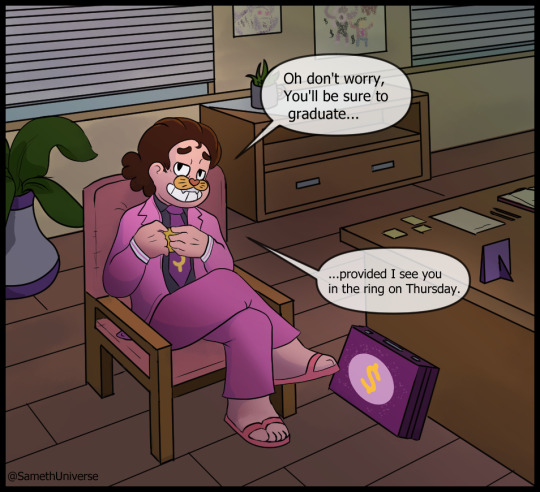
#2020#Steven Universe#Steven#Fanart#This was a joke about the corrupted Steven Theory#I was trying to learn perspective but wasn't quite there yet#Art
9 notes
·
View notes
Text
Gem corruption theory list (first of many!)
So first off, I think that while all gems of certain types each have similar “base” corruption forms, their different memories, powers, personalities, and physical variations cause different appearances when they corrupt. (A little bit like the witches in Puella Magi Madoka).
So here’s what I think some of those forms are (some of them are canon):
Sapphires- Ghostly jellyfish creatures with long ribbon like tentacles. *Corruption Scars include long trailing ribbons from their “clothes”, a tendency to remain floating due to slight weakness,and glassy skin.*
Jaspers, Amethysts, Carnelians, and Quartzes- Vaguely wolfish quadrupeds with, shaggy hair, missing eyes, and bodies covered in horns and blotches of discoloration* Some have more feline or a different type of canine attribute depending on the gem variant.
Spinels- Overextended puppet-y creatures with long claws, long matted hair, completely black eyes that weep a caustic black fluid, and fixed facial expressions similar to a doll. *Corruption Scars include increased height, black streaks running from under the eyes and
down the cheeks, whites of eyes are tinted black, and long sharp fingers.*
Pearls: Moth-like creatures whose patterns may vary wildly. *Corruption Scars include antenna like hair, blotchy discolorations on limbs, and many re-form in “clothing* that has baggy sleeves or tails behind them*.
Topazes: Fuse themselves with whatever rubble they are in and are able to project body parts (usually facial features) from their new “body”. *Corruption Scars include a “blankness” of their faces except for either a mouth or a pair of eyes. They can still see if they re-form without eyes, but won’t be able to speak without a mouth.*
Aquamarines: Fuzzy bat-like creatures with crazed eyes , fanged mouths, and clawed hands. *Corruption scars include a small fuzzy pair of “ears”, two long fingers in place of hands, and a mouthful of fangs*.
Rubies: Crystalline Goblin-like monsters that have claws in place of hands and lack eyes. Their “hair” becomes more akin to a stone helmet. *Corruption scars include rashy looking patches of crystal on various parts of their bodies*.
I have more, but that’s plenty for now!
#steven universe#steven universe spoilers#word dump#texpost#fan theories#corrupted gems#headcanon#ties into my fan art#description of minor body horror#corruption of mind and body#Random Puella Magi Madoka reference#ruby#sapphire#quartz#jasper#amethyst#aquamarine#topaz#pearl#spinel#carnelian#misc quartzes
30 notes
·
View notes
Note
uihjnuhjsgdn i just saw the term "worm theory" in your tags and aged a thousand years, to the best of my knowledge it's my fault that this term got popularized on tumblr before we all collectively realized he had shoulders XD
alksdhfsdfhlsdkhfl 😂
In defense of the continued usage of the term (even though he really does have shoulders!), it's funny as fuck and makes no sense without context, which I love lmfao.
#corrupted Steven theory? no. w o r m t h e o r y.#*points* you. you did this. (/light hearted)(/joking)#actually I think it was your post I saw on the matter that swayed me into believing it so. lmao#holy shit tag edits......#beans answers
3 notes
·
View notes
Text



Falsification AU || Pages 100-102
REBLOG ONLY
Steven sleeps only to find himself in a familiar scene...the times right before his final corruption happened..while his monster was in control. What did that door have on the other side? What was Steven's true fate?
Mod Note: Holy Cow we made it everyone. PAGE 100! I want to take a moment and thank you all for all your support. I never knew I'd get this far with the AU but I am happy to provide this content to you all! Pages 100-102 are from pilot pages I made as a concept to the AU before it began, I will probably reblog with those pages as well. Love you all! -Topaz.Studios
Previous >> Next
#steven universe#falsification au#steven universe future#corrupted steven#steven universe au#corrupt steven theory#steven universe comic
127 notes
·
View notes
Text
Rant time, but like, people who complain about the diamonds in Steven Universe getting "redeemed" and "facing no consequences" like, why did you ever think the diamonds getting destroyed was on the table as an option? Why did everyone think the show was going to end with Steven fighting and killing the diamonds, or the universe dolling out some Hayes Code Karma Violence like a giant rock falling on them at the last second?
Like I guess I understand the criticism in theory that Steven Universe's metaphor for the diamonds as toxic family members falls apart when you consider they're crimes as space monarchs doing a colonialism, but Steven isn't The Avatar. At no point in the show does he even have the power to doll out the punishment you guys want.
Steven *does* try to fight the diamonds, and he gets his ass kicked. He gets smashed under his own shield and knocked out. His mom forms an entire army to fight them and LOSES and has almost all of her friends corrupted by them. The Diamonds are bigger, badder and stronger than The Crystal Gems (kind of like how adults are bigger and stronger than children.) So instead, he reveals his identity as Pink and the Diamonds immediately stop trying to kill him and the show instead pivots to be about political diplomacy. He doesn't like the diamonds, by the time Future rolls around we find out that he hates them and has private thoughts about killing them even now that that they don't pose any threat. But during the show he's powerless and so instead, talking to them and trying to change their mind is just a practical option because fighting hasn't worked. Because in the real world, there are times you will be outmatched and violence won't be the answer—even if the people hurting you probably do deserve violence.
And the diamonds aren't "redeemed," they just change their mind. They just decide that they want to keep Pink in their lives, so they begin to take accountability and undo the damage that they caused with their war, and presumably will spend the next thousands of years of their lives dismantling their own empire. And again, Steven Universe Future discusses the discomfort and the downside of this approach, that even if it's better and harm is actively being undone, the diamonds can't resolve all the harm they've done and Steven largely doesn't feel like he's gotten justice for what they did to him and his mother—much less the universe. So I don't get where anyone gets off saying this story is irresponsible or saying you should just forgive bad people. I don't see that anywhere in the story. The theme of Universe has always been the necessity of change, and so it makes sense that the villains aren't forgiven or revealed to be good people—but that they just change.
626 notes
·
View notes
Text
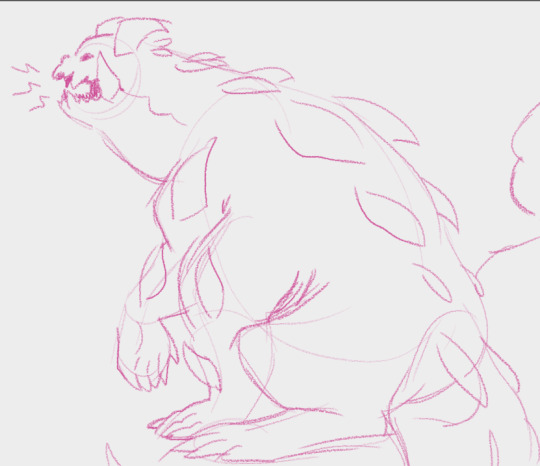

going back to my roots (monster body fun to draw)
#my art#steven universe#steven universe future#suf#su#su steven#corrupted steven#corrupted steven theory#god havent used that tag since like 2019. (lying)#sorry it isnt rain world content. sorry pookies
29 notes
·
View notes
Note
I had asked if Steven was corrupted a while ago, since he fused with jasper. Your response was that hi human suit was in the way, from what I remember. But, your recent comic shows corruption on his shoulder, is this a sign of his skin "letting go"? Like, tearing apart? And then having light (like full gems) cover that part of his body?
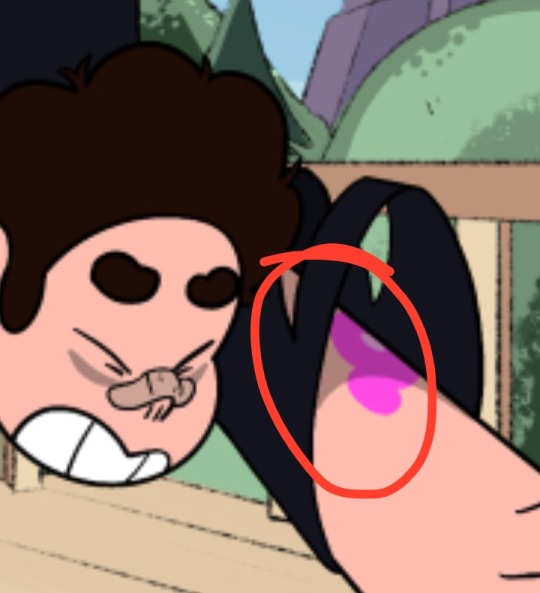

Sorry for all this, my inner theorist came out
That might be the case! I love theories and ideas so I'm happy to listen to all of them. (Sometimes my answers might be spoiler- friendly, with clues) but the boy is looking a little tattered. When he corrupted the first time, he did kinda... open right up.
100 notes
·
View notes
Text
Can people even call the wraith scratch theory a theory at this point? And I know theories are theories until proven but It's basically already confirmed canon. I know it hasn't been confirmed yet but there is so much evidence to back it up it baffles me how people still don't believe it's true.


Comparisons, the noses are literally the same shape, the hair has the same shape, they have the same double chin, they both have the same structural face format, hell have you not even noticed that scratch and Todd are played by the same guy, DANA SNYDER!!! Wraiths have already been introduced to be a thing along with Molly's soul-less body when she's not in it! It has a greyish tone (Todd has a grey tone to him, hell he literally wears grey clothes) along with the soul-less body sounding dead and toneless (again Todd has the same thing). And don't say "Well he can't be a wraith because he sometimes shows emotion" no shit he shows emotion, have you not realized how long he and scratch have been separated? Todd is basically his own person. We don't have a time frame as of writing this but it has too have been a pretty long time. We do know that scratch has been a "ghost" for many years and doesn't remember a thing.


Another thing, scratch and Todd both love food, the only time we've seen Todd smile is when there is FOOD INVOLVED in the episode "Festival of lights"!!! And if you know scratch you know he will literally do anything to eat anything, he will eat garbage, he will eat literal objects, he loves food. Honestly you don't even need to know him to know he loves food, because most times when he's around hes either eating or begging for something greasy.
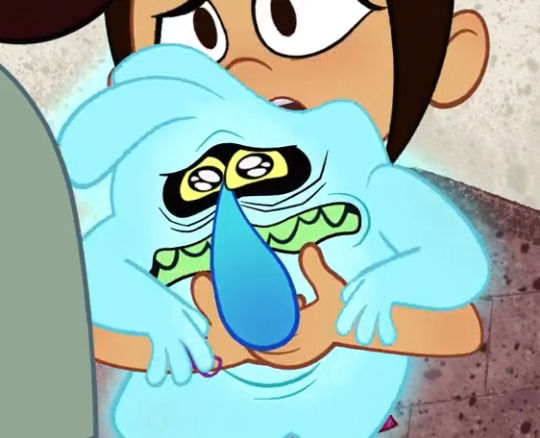

Honestly I don't even know how someone can still deny this theory. This feels like the Steven universe corruption theory all over again. Sorry this was long I just had to let this all out because it is crazy how many people I've seen still disbelieve this. And many people on Tumblr have already made their thoughts on it, I just wanted to post this before the episodes came out to give my final thoughts on it.

Final thoughts:
Scratch is Todd confirmed screw you if you think otherwise.
106 notes
·
View notes